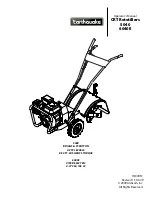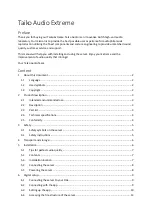
Marine Installation Manual
2022-03
3-11
3 Engine Installation
3.5 Engine foundation and seating
X62DF-S2.0
A summary of the advantages and disadvantages of the two engine foundation
layouts is provided in
Table 3
-
3
Advantages and disadvantages for the standard and narrow engine foun
-
dation layouts
3.5.3
Engine installation and fixation
To ensure the fixing of the engine under all operating conditions, the engine must be
effectively and permanently tightened down by foundation bolts. WinGD recom
-
mends the use of thrust sleeves at the driving end. It has proven to be an easy, quick,
and cost-efficient method for force transmission. The thrust sleeve is fitted to the
bottom plate of the engine bedplate and to the foundation top plate. It serves as an
interface for the transmission of various forces. The holes in the foundation top
plate are pre-machined (e.g. flame-cut) with a larger diameter than the thrust sleeve.
The thrust sleeve in the hole of the foundation top plate is then fixed with epoxy
resin (see
). The foundation bolts are inserted in the thrust sleeve
and tightened together with the same torque as the regular foundation bolts. Since
thrust is transmitted by the thrust sleeves, no end stoppers are required.
For the engine fixation, foundation bolts are installed without the thrust sleeve
assembly parts.
Standard
Narrow
Ad
va
nt
ag
es
Forces transmitted to the side
girder
Dynamic stresses on the bed
-
plate welding seams are re
-
duced
Additional longitudinal stiff
-
eners can be omitted
Easier for welding activities
and less material is required
Less width is required for the
installation which enables en
-
gine installation in the aft-most
position
Less oil volume is required for
the same filling height
Di
sa
dv
an
ta
ge
s
More width is required for the
installation which limits the
flexibility of the engine installa
-
tion position
More complicated welding ac
-
tivities due to the narrow space
caused by the longitudinal stiff
-
ener
















































